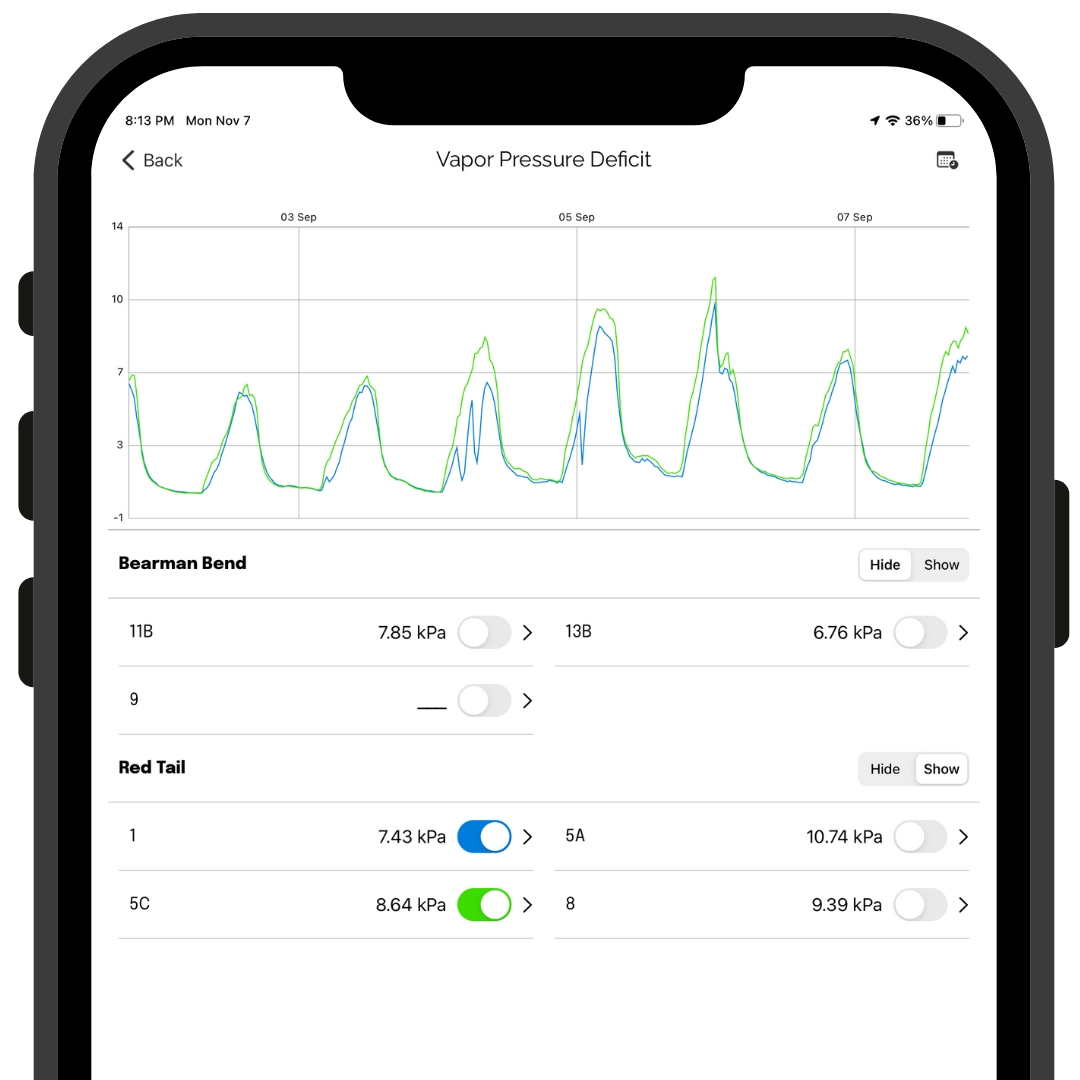Extreme heat is coming: Here are VPD strategies to help growers prepare
THE HEAT DOME OF 2022:
In September 2022, a long-lasting heat dome over the Western U.S. brought record-breaking temperatures to wine regions. In Napa, several Agrology-monitored vineyard blocks reached temperatures of over 120 degrees. The Agrology platform predicted this heat spike three days ahead of the event. Post heat dome, the resulting data gave growers additional confidence in the Agrology platform. Customers were alerted to the specific blocks in danger. With fruit on the vine and close to harvest, grower intervention was imperative to save the vintage.
Protecting the grapes had to be done at the right time and using the right intervention. Real-time data was the key to perfecting the timing.
Customers received Agrology alerts that the vapor pressure deficit (VPD) would be extremely high in certain vineyard blocks, meaning that crops were at risk of severe yield reductions, or damage to the grapes on the vine. They took creative action to knock down high VPD levels by pre-irrigating to ensure water availability, and using frost sprinklers to reduce VPD. Customers told us that the timing for running sprinklers during those high heat events is what really mattered.
Many customers irrigated to a full soil moisture profile before the heat and knew that in a big heat wave or frost event, they would have to adjust the temperatures in the canopy by running the sprinklers. Yet, using the minimal amount of water was (and always is) imperative in these situations.
This is where Agrology’s predictive modeling and nano-climate monitoring for extreme VPD and high temperatures helped our growers. By predicting extreme heat down to the block level, growers planned ahead and took action when it mattered. Agrology data presented an easy-to-read prediction format and alerted growers before the damage occurred.
While using water during these events was absolutely the right approach, conserving water was also extremely important. During the heat dome, customers ran the sprinklers until they saw a drop in the VPD of specific blocks. It was all about timing and being most effective with minimal water usage. Agrology allowed these customers to see the VPD levels in real time, overlaid with real-time data on irrigation and soil moisture.
Agrology customers could control the exact amount of water needed to bring VPD down, which protected their blocks and conserved valuable water resources.
Extreme Heat & VPD readings at a customer location, September 2022.
Given what we learned from our customers during that heat dome, we’ve created a quick list of suggested strategies for growers.
VPD STRATEGIES FOR GROWERS:
Irrigate in the days leading up to the heat wave to fill the soil profile with water.
Target field capacity for the irrigation set (if sufficient water is available).
This ensures vines have ample access to soil water during the heatwave.
2. During the heatwave, switch your pump to your frost sprinklers and monitor the VPD levels in the canopy.
High VPD can suck water from the vines faster than they can draw water from the soil, causing grape and vine damage.
Look at predicted VPDs in the Agrology app.
Plan to run sprinkler sets when VPD rises above 5kPa.
Each sprinkler set should last 15-30 min to knock down VPD for approximately 2 hours. Sprinkler sets will knock down VPD levels quickly.
Plan enough sprinkler sets to cover the entire predicted period of elevated VPD.
Monitor VPD in real time and adjust the sprinkler plan accordingly.
3. Use Agrology to monitor VPD and temperature levels in real time.
Keep an eye on VPD levels.
To minimize water usage, and avoid elevating disease risk, don’t over sprinkler. If you can extend the wait between sprinkler set intervals based on real time data, do it.
Continue to watch the data in the Agrology app for predictions and measurements so you can take further action when needed.
Are you ready to take action and mitigate threats from extreme heat and frost?


